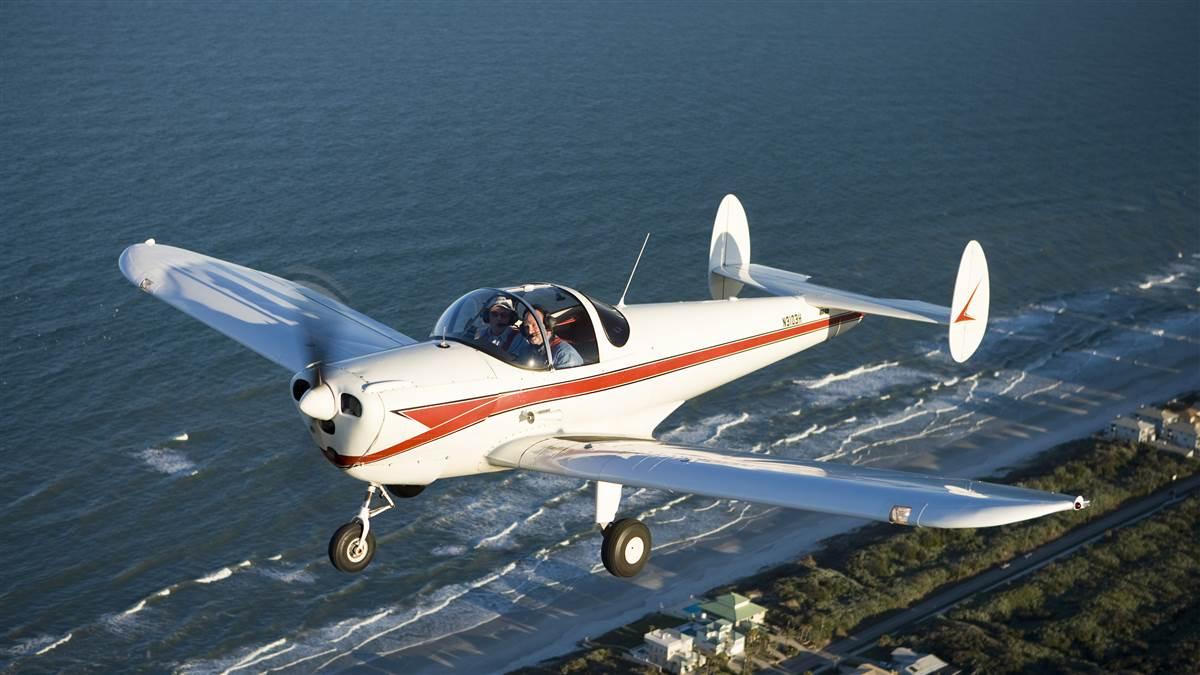Ramp appeal: Ercoupe
Fun, economical two-seater was originally designed for safety

Safety features designed by Fred Weick in the late 1930s include linked control surfaces, limited elevator travel, and an outer wing that refuses to stall. These features were meant to keep pilots from cross controlling an aircraft and entering an inadvertent spin, a common and deadly malady when the Ercoupe entered the market in 1940.
Fuel-sipping 75-, 85-, or 90-horsepower four-cylinder Continental engines with fixed-pitch propellers power the low-wing single to about 100 mph if the dual sliding canopy windows are closed—slightly slower with the windows open.
An aluminum fuselage that is often polished and unpainted is attached to either fabric-covered or “metalized” wings with nearly full-span ailerons but no flaps. Dual yokes control both ailerons and rudders, so the airplane lacks rudder pedals. A bench seat, art deco glove boxes, and a single brake pedal further distinguish the fun-to-fly ’Coupe.
The line was originally manufactured by the Engineering and Research Company, hence the name Ercoupe, in Riverdale, Maryland. Nearly 5,000 were built immediately after World War II. Early ’Coupes have a gross weight of 1,260 pounds and can be flown as light sport aircraft under sport pilot rules.
Landing is typically “over the fence” at 80 mph, with a flare at about 65 mph. Pulling the yoke all the way back can make an Ercoupe sink like a stone over a real-life 50-foot obstacle; keep a touch of power in to cushion the nearly flat flare.
Because the airplane lacks separate rudder controls, needed for slips, landings are performed by weathervaning into the breeze. Make sure you are over your touchdown zone and you’ll be all right after the landing gear’s trailing link design straightens things out once it contacts terra firma. In real-world conditions the stout Ercoupe can handle more direct crosswind than a typical Cessna 172 or 182. Climbouts are between 70 to 80 mph at 500 fpm solo, and less with a passenger, especially on a hot day.
A revolving door of manufacturers kept the brand alive through the early 1970s. Ownership changes include Forney’s F–1 and F1A (1960-62), Alon’s A–2 Aircoupe (1964-67), and Mooney’s A–2A dual-tail and M–10 Cadet single-tail (1967-70) versions. Vintage aircraft specialist Univair Aircraft Corp. bought the type certificate in 1974 and vowed to keep the little birds flying by continuing to make parts available.



